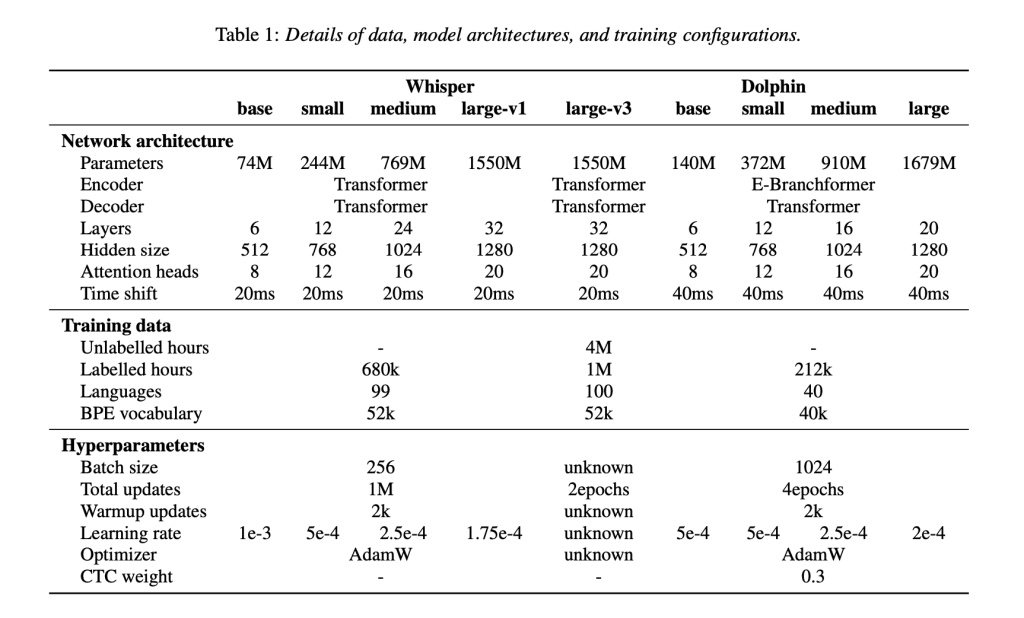
Dolphin: A Breakthrough in Multilingual Automatic Speech Recognition
Introduction to Dolphin
Recent advancements in Automatic Speech Recognition (ASR) technology have highlighted significant gaps in the ability to accurately recognize various languages, particularly Eastern languages. Traditional ASR systems, such as OpenAI’s Whisper, struggle with these languages, creating challenges in multilingual regions rich in dialects. To address this issue, researchers from Dataocean AI and Tsinghua University have developed Dolphin, a multilingual ASR model specifically optimized for Eastern languages and dialects.
Key Features of Dolphin
Comprehensive Language Support
Dolphin supports 40 Eastern languages, including those from East Asia, South Asia, Southeast Asia, and the Middle East, as well as 22 dialects of Chinese. This extensive support is crucial for businesses operating in diverse linguistic environments.
Advanced Architectural Design
The model employs a hybrid ASR approach that combines Connectionist Temporal Classification (CTC) with attention-based mechanisms. Its architecture features an E-Branchformer encoder and a Transformer decoder, enhancing its ability to interpret complex linguistic patterns. Additionally, Dolphin’s dual-level language tokenization system improves recognition accuracy, particularly for dialect-heavy languages.
Efficiency and Speed
Dolphin includes a 4× subsampling layer that reduces input sequence lengths, improving computational speed and training effectiveness without sacrificing accuracy. This efficiency is vital for businesses looking to implement ASR technology at scale.
Performance Metrics
Experimental evaluations show that Dolphin significantly outperforms existing models. For example, the Dolphin small model achieved a Word Error Rate (WER) reduction of approximately 24.5% compared to the base Whisper model. The Dolphin base model recorded an average WER of 31.8%, outperforming Whisper’s large-v3 model, which had a WER of 52.3%.
Open Source and Community Engagement
The Dolphin base and small models have been released under the Apache 2.0 license, along with inference code, promoting transparency and collaboration in the AI community. The training utilized a robust dataset of 21.2 million hours of audio, ensuring the model’s reliability and replicability.
Practical Business Solutions
Identifying Automation Opportunities
Businesses can leverage Dolphin’s capabilities by identifying processes that can be automated, particularly in customer interactions where ASR can add significant value.
Measuring Impact
Establishing key performance indicators (KPIs) is essential to ensure that investments in AI yield positive business outcomes. Regular assessments can help in refining strategies and maximizing benefits.
Starting Small
It is advisable to initiate AI projects on a smaller scale, gather data on their effectiveness, and gradually expand the use of AI technologies within the organization.
Conclusion
Dolphin represents a significant leap forward in multilingual ASR technology, effectively addressing the challenges of recognizing Eastern languages and dialects. By integrating advanced methodologies and promoting open-source collaboration, Dolphin sets a new standard for future developments in this field. Businesses that adopt such innovative technologies can enhance their operational efficiency and improve customer engagement, paving the way for a more inclusive and effective communication landscape.

























